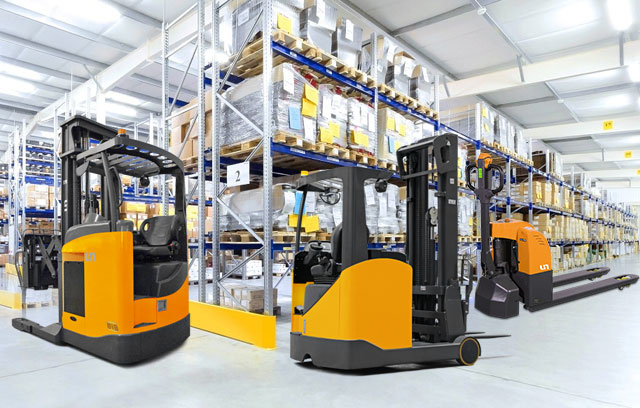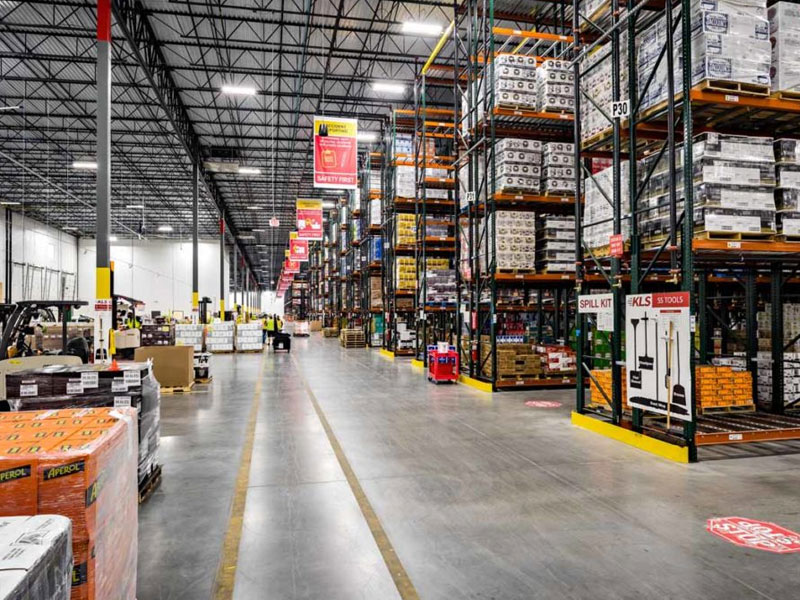Electric Forklifts are equipped with a range of safety features and controls to ensure safe operation in industrial and warehouse environments. These safety features are designed to protect both operators and bystanders and help prevent accidents. Here are some typical safety features and controls found in Electric Forklifts:
Operator Compartment Safety:
Overhead Guard: A protective structure above the operator's compartment to shield the operator from falling objects.
Operator Seat: A secure and comfortable seat with a seatbelt to keep the operator in place during operation.
Visibility Enhancements:
Mirrors: Rearview and side mirrors to improve visibility in blind spots.
Lights: Headlights, taillights, and warning lights to ensure visibility in low-light conditions.
Horn: An audible warning device to alert pedestrians and other workers in the vicinity.
Speed and Acceleration Control:
Speed Limiter: Controls to limit the maximum speed of the forklift for safe operation in specific areas.
Smooth Acceleration: Features to provide gradual acceleration and deceleration, reducing the risk of tip-overs.
Steering and Maneuverability:
Steering Sensitivity: Adjustable steering sensitivity to accommodate various skill levels of operators.
Tight Turning Radius: Some Electric Forklifts are designed with a tight turning radius for enhanced maneuverability in confined spaces.
Braking Systems:
Regenerative Braking: Captures energy during braking and converts it into electrical energy, improving energy efficiency and reducing wear on traditional brakes.
Emergency Brake: An emergency brake system that can quickly bring the forklift to a complete stop in case of an emergency.
Load Handling Safety:
Load Backrest: A protective backrest on the forks to prevent loads from falling back onto the operator.
Load Capacity Indicator: An indicator that shows the current load capacity of the forklift, helping operators avoid overloading.
Attachment Safety: Controls to ensure safe attachment and release of various accessories and forks.
Stability Features:
Stability System: Some Electric Forklifts are equipped with stability control systems that monitor load weight and distribution, alerting the operator if stability limits are approached.
Tilt Sensors: Sensors that detect the angle of the mast and alert the operator if the forklift is on the verge of tipping.
Emergency Stop Controls:
Emergency Stop Button: A prominently placed button that immediately shuts down all forklift operations in emergencies.
Cut-off Switches: Switches that allow the forklift to be disabled in case of unauthorized use.
Battery Safety:
Battery Disconnect: A disconnect switch to isolate the battery during maintenance and service.
Battery Monitoring: Systems that monitor battery status, including charge levels and temperature, to prevent overheating and overcharging.
Operator Training and Certification:
Comprehensive Operator Training: Proper training and certification programs to ensure operators are knowledgeable about safe operating practices.
Maintenance Alerts:
Maintenance Indicator Lights: Lights or indicators that alert operators and maintenance personnel to required maintenance or service intervals.
It's important to note that operator training and adherence to safety protocols are essential for safe Electric Forklift operation. Regular maintenance and inspections are also crucial to ensure that safety features remain functional and effective.











 中文简体
中文简体 عربى
عربى Español
Español














